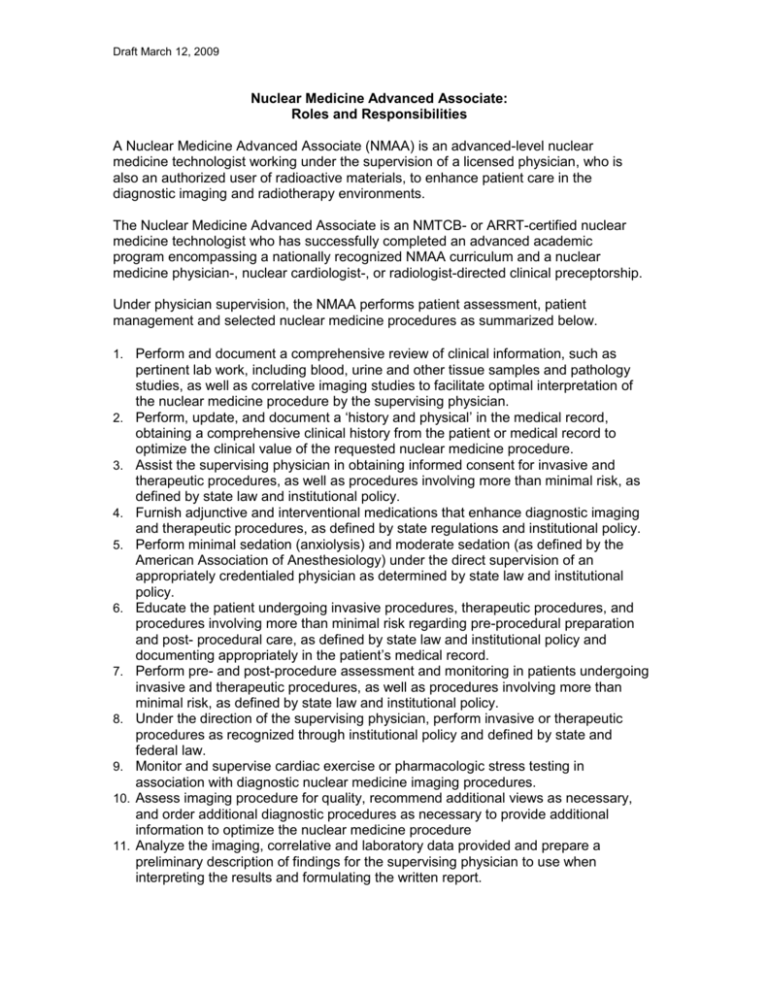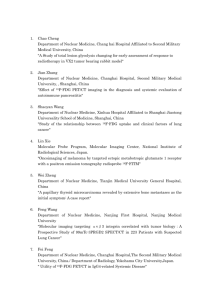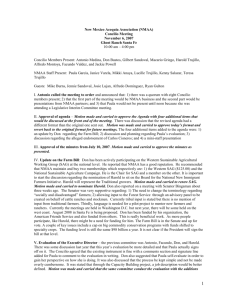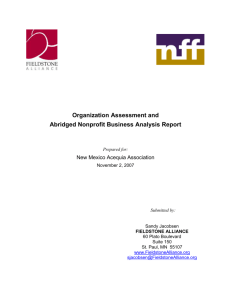Roles and Responsibilities - Society of Nuclear Medicine
advertisement

Draft March 12, 2009 Nuclear Medicine Advanced Associate: Roles and Responsibilities A Nuclear Medicine Advanced Associate (NMAA) is an advanced-level nuclear medicine technologist working under the supervision of a licensed physician, who is also an authorized user of radioactive materials, to enhance patient care in the diagnostic imaging and radiotherapy environments. The Nuclear Medicine Advanced Associate is an NMTCB- or ARRT-certified nuclear medicine technologist who has successfully completed an advanced academic program encompassing a nationally recognized NMAA curriculum and a nuclear medicine physician-, nuclear cardiologist-, or radiologist-directed clinical preceptorship. Under physician supervision, the NMAA performs patient assessment, patient management and selected nuclear medicine procedures as summarized below. 1. Perform and document a comprehensive review of clinical information, such as 2. 3. 4. 5. 6. 7. 8. 9. 10. 11. pertinent lab work, including blood, urine and other tissue samples and pathology studies, as well as correlative imaging studies to facilitate optimal interpretation of the nuclear medicine procedure by the supervising physician. Perform, update, and document a ‘history and physical’ in the medical record, obtaining a comprehensive clinical history from the patient or medical record to optimize the clinical value of the requested nuclear medicine procedure. Assist the supervising physician in obtaining informed consent for invasive and therapeutic procedures, as well as procedures involving more than minimal risk, as defined by state law and institutional policy. Furnish adjunctive and interventional medications that enhance diagnostic imaging and therapeutic procedures, as defined by state regulations and institutional policy. Perform minimal sedation (anxiolysis) and moderate sedation (as defined by the American Association of Anesthesiology) under the direct supervision of an appropriately credentialed physician as determined by state law and institutional policy. Educate the patient undergoing invasive procedures, therapeutic procedures, and procedures involving more than minimal risk regarding pre-procedural preparation and post- procedural care, as defined by state law and institutional policy and documenting appropriately in the patient’s medical record. Perform pre- and post-procedure assessment and monitoring in patients undergoing invasive and therapeutic procedures, as well as procedures involving more than minimal risk, as defined by state law and institutional policy. Under the direction of the supervising physician, perform invasive or therapeutic procedures as recognized through institutional policy and defined by state and federal law. Monitor and supervise cardiac exercise or pharmacologic stress testing in association with diagnostic nuclear medicine imaging procedures. Assess imaging procedure for quality, recommend additional views as necessary, and order additional diagnostic procedures as necessary to provide additional information to optimize the nuclear medicine procedure Analyze the imaging, correlative and laboratory data provided and prepare a preliminary description of findings for the supervising physician to use when interpreting the results and formulating the written report. Draft March 12, 2009 12. Communicate report findings in the physician’s finalized and authenticated reports to the referring physician and provide necessary documentation. The NMAA should actively participate in a practice-based improvement activities as well as facility quality assurance programs. They should be competent in overseeing compliance with all local, state, regional, and federal requirements for laboratory operations and accreditation, and provide education for technologists, students, and staff. They will be expected to participate in maintenance of certification (MOC) activities and be credentialed by the institution in which they practice. The education of the nuclear medicine advanced associate is granted through nationally accredited academic programs offered at the master’s degree level and that lead to certification through the ARRT/NMTCB. Advisory committees to such programs should include representation from the nuclear medicine medical community. The nuclear medicine medical community should be represented in any formal national or state certification or licensure process and be actively involved in facility NMAA credentialing. This statement should be added after the ACR has reviewed and approved the NMAA: “The ACR believes that the advent of the nuclear medicine advanced associate with defined responsibilities as described herein will enhance the performance of nuclear medicine procedures and patient care and provide a professionally satisfying career pathway for nuclear medicine technologists.” March 2009 (this date will change)








